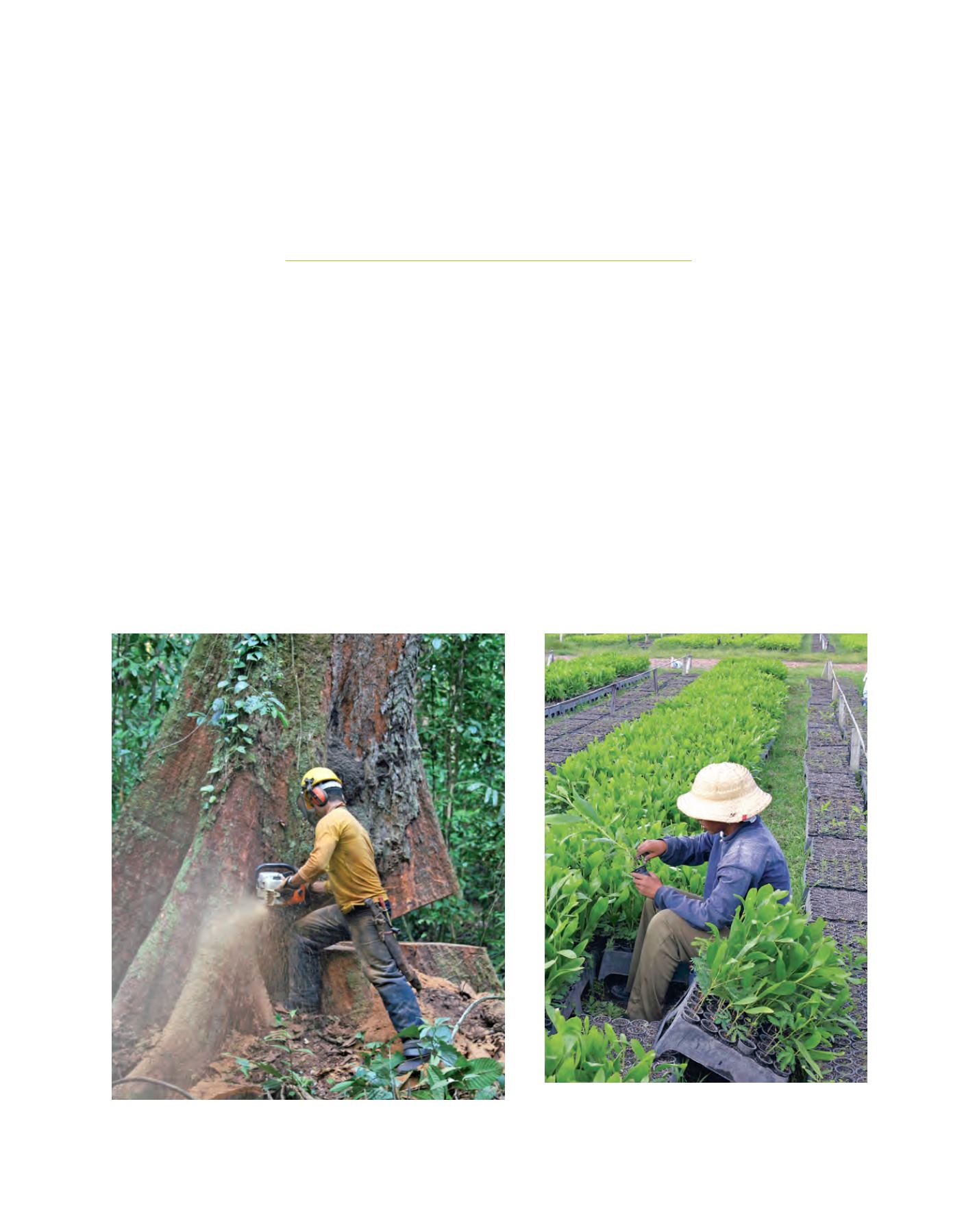

[
] 116
Investing in sustainable timberland:
returns, environmental and social benefits,
bioenergy and forest fuel
Reinhold Glauner, WaKa - Forest Investment Services AG, Winterthur, Switzerland
F
orests have always provided and will continue to
provide a major livelihood for people. Their environ-
mental services and their function for providing goods
are undisputed. However, beyond direct benefits, for example
the provision of food, shelter and firewood and the economic
functions of forests at local or global scale, opinions often
strongly divert.
1
Textbooks addressing the question ‘What is the economic value of a
forest?’ could fill bookshelves. Values have been assigned for envi-
ronmental services such as recreation, erosion protection, carbon
stocks and sequestration and biodiversity. Even birds and individ-
ual trees have been assigned values. However, forest owners could
rarely ever achieve these values in monetary terms.
More tangible figures exists when it comes to land and
timber values. Again, forestry experts are not in total
agreement but volatility is much smaller and docu-
mented through concrete market deals when forests
change ownership.
The histories of humans and forests are strongly
interlinked and hunter-gatherers began to influence
forest development 50,000 years ago. The evolution of
agriculture some 10,000 years ago was a quantum leap
in the development of the human race, and influence on
forests was even stronger. One does not need to go far
back in time: The Middle Ages deforested Germany to
Forest investments create skilled labour (FSC-certified investment in natural
forests in Brazil)
Nurseries are the basis for carbon sequestration with forest
plantations creating jobs in rural areas (FSC-certified nursery for
Acacia mangium
in Brazil)
Image: R. Glauner
Image: R. Glauner
















